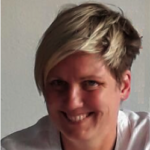Link to Pubmed [PMID] – 8557351
Infect Immun. 1996 Jan;64(1):277-82
Biofilm formation is thought to result from the concerted action of primary attachment to a specific surface and accumulation in multilayered cell clusters. Here we describe the isolation and characterization of transposon (Tn917) mutants of Staphylococcus epidermidis O-47 which were biofilm negative in the polystyrene microtiter plate assay. Among 5,000 Tn917 insertion mutants, 4 biofilm-negative mutants were isolated. Each mutant carried one copy of Tn917. The mutants were divided into two phenotypic classes: class A (mut1 and mut1a) and class B (mut2 and mut2a). Mutants of phenotypic class A lacked four cell surface proteins, were less hydrophobic, and were affected in primary attachment to polystyrene, but were still able to form multilayered cell clusters. They were able to form a biofilm on a glass surface, a trait that was even more pronounced than in the wild-type stain O-47. Loss of several surface proteins might have led to the reduced surface hydrophilic structures, thus favoring primary attachment to a glass surface and leading to subsequent biofilm formation. Mutants of phenotype class B were able to attach to polystyrene but were unable to form multilayered cell clusters, had unchanged cell surface proteins and hydrophobicity, and were unable to form a biofilm on a glass surface, mut1 and mut2 could be complemented by wild-type DNA fragments containing the Tn917 insertion sites of mut1 and mut2, respectively. The complemented biofilm-positive clone mut1 (pRC20) produced a 60-kDa protein which is postulated to function as the adhesin for binding to plastic. The traits of binding to polystyrene and the ability to form multilayered cell clusters are phenotypically and genetically distinct.
